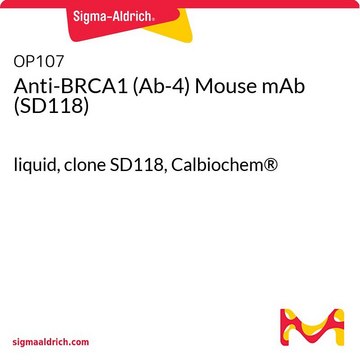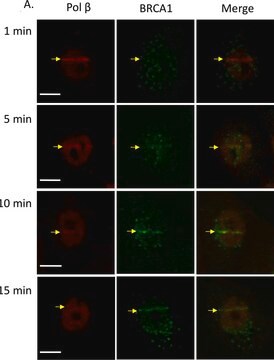10236276001
Roche
4′,6-diamidino-2-fenilindolo
4′,6-Diamidine-2′-phenylindole dihydrochloride
Sinonimo/i:
2-(4-amidinofenil)-6-indolocarbammidina, DAPI
About This Item
Prodotti consigliati
Livello qualitativo
Saggio
>90%
Stato
powder
Confezionamento
pkg of 10 mg
Produttore/marchio commerciale
Roche
λmax
340 nm in aq. suspension
Fluorescenza
λex 340 nm; λem 488 nm (nur DAPI)
λex 364 nm; λem 454 nm (DAPI-DNA-Komplex)
Temperatura di conservazione
room temp
Stringa SMILE
Cl.Cl.NC(=N)c1ccc(cc1)-c2cc3ccc(cc3[nH]2)C(N)=N
InChI
1S/C16H15N5.2ClH/c17-15(18)10-3-1-9(2-4-10)13-7-11-5-6-12(16(19)20)8-14(11)21-13;;/h1-8,21H,(H3,17,18)(H3,19,20);2*1H
FPNZBYLXNYPRLR-UHFFFAOYSA-N
Cerchi prodotti simili? Visita Guida al confronto tra prodotti
Categorie correlate
Applicazioni
Azioni biochim/fisiol
Qualità
Principio
Nota sulla preparazione
Preparation of stock solution
Dissolve in double-dist. water to a final concentration of 1 to 5 mg/ml.
Note: Do not use any buffers.
Preparation of working solution
Dilute the stock solution with methanol to a final concentration of 1 μg/ml. The working solution is stable at 2 to 8 °C for about 6 months.
Storage conditions (working solution): Stock solution (1 to 5 mg/ml) at -15 to -25 °C for 12 months.
Working solution (1μg/ml) at 2 to 8 °C for about 6 months.
Ricostituzione
Note: Prepare aliquots and store at -15 to -25 °C.
Codice della classe di stoccaggio
11 - Combustible Solids
Classe di pericolosità dell'acqua (WGK)
WGK 2
Punto d’infiammabilità (°F)
Not applicable
Punto d’infiammabilità (°C)
Not applicable
Scegli una delle versioni più recenti:
Possiedi già questo prodotto?
I documenti relativi ai prodotti acquistati recentemente sono disponibili nell’Archivio dei documenti.
I clienti hanno visto anche
Il team dei nostri ricercatori vanta grande esperienza in tutte le aree della ricerca quali Life Science, scienza dei materiali, sintesi chimica, cromatografia, discipline analitiche, ecc..
Contatta l'Assistenza Tecnica.










